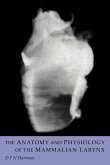A sound knowledge of biology, mathematics, physics and chemistry in needed to understand how excitable cells function and the many basic concepts involved in acquiring this knowledge are described from first principles in this book. As these principles equally apply to other biological fields such as the study of membrane transport, artificial membranes, signal capturing, analysis in biological systems and general applications of mathematics and physics to biology, they are of general interest. An important feature of the book is the appendices, in which mathematical functions are derived, and which ensure the usefulness of the volume as a reference manual.
Table of contents:
Acknowledgements; Definitions, abbreviations and conventions; 1. Introduction and overview; 2. Ions in solution; 3. Diffusion in free solution; 4. Diffusion within a membrane; 5. Membranes, channels, carriers and pumps; 6. Membrane equivalent circuits; 7. Voltage-sensitive channels: the membrane action potential; 8. The propagated action potential; 9. Synaptic potentials; 10. Membrane noise; Appendices; Suggested further reading; Index.
A sound knowledge of biology, mathematics, physics and chemistry in needed to understand how excitable cells function and the many basic concepts involved in acquiring this knowledge are described from first principles in this book.
An important feature of the book is the appendices, in which mathematical functions are derived, and which ensure the usefulness of the volume as a reference manual.
Table of contents:
Acknowledgements; Definitions, abbreviations and conventions; 1. Introduction and overview; 2. Ions in solution; 3. Diffusion in free solution; 4. Diffusion within a membrane; 5. Membranes, channels, carriers and pumps; 6. Membrane equivalent circuits; 7. Voltage-sensitive channels: the membrane action potential; 8. The propagated action potential; 9. Synaptic potentials; 10. Membrane noise; Appendices; Suggested further reading; Index.
A sound knowledge of biology, mathematics, physics and chemistry in needed to understand how excitable cells function and the many basic concepts involved in acquiring this knowledge are described from first principles in this book.
An important feature of the book is the appendices, in which mathematical functions are derived, and which ensure the usefulness of the volume as a reference manual.








